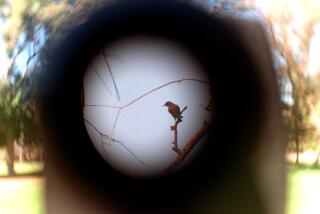Air apparent
âHow is it possible to bring order out of memory?â So begins Beryl Markhamâs âWest With the Night,â the book that made Jennifer Brice want to become a pilot. Markhamâs writing may have been the inspiration, but it was Briceâs Alaskan homeland that tossed her into the air, as she skittered like a sparrow across a runway, learning to land her plane. Alaska gave Brice short runways carved of Aleutian Island stone, and the misjudged runways of remote frozen lakes covered with snow that snagged wing-tips until her plane sank to its belly in exquisite stillness. âUnlearning to Fly,â a memoir in essays, doesnât order Briceâs memories so much as allow forces of wind and weather to reveal them.
Brice was born in Fairbanks. Her mother was a nursing school graduate from the East Coast whoâd meant to stay in Alaska only the requisite two years on her public health service contract. Briceâs father, a flight mechanic, proposed in the airport on her way home one year for Christmas. He established a land-clearing business that would take him to the bush for much of Briceâs childhood; her mother continued a career in public health and set up households in northern villages such as Noorvik and Wainwright. They returned to Fairbanks for Brice and her siblings to attend school. In the â70s, the Alaska pipeline brought more work for her fatherâs business, and whole milk rather than Carnation powdered.
Paradoxically, with a mother in a career that reads like a socially acceptable disguise for adventuring, the family limited Briceâs childhood roles: ballet, emptying the dishwasher after dinner and setting her hair in curlers each night before bed. She didnât own blue jeans until high school. She read through her parentsâ bookshelves and also devoured romance novels -- âdreadful books . . . two or three a day, still warm from the hands of the friend whoâd loaned them to me.â Brice had a younger brother, two younger sisters and, later, another brother, an Alaskan earthquake adopted into their family: âa four-year-old ball of fury.â
âIn the North, flying is the most quotidian form of travel,â Brice explains. It also appears to be the form of travel with death most clearly on its horizon. âWhen an Alaskan dies in a plane crash, Iâm rarely more than two degrees of separation from knowing him or her.â Flying is embedded in her family, where âthe work depended on someoneâs being able to land at remote airstrips or on beaches or gravel bars.â And yet, Brice learns to fly only as an adult; she thinks she is âsoft. Learning to fly would be hard.â
The reader sees in Briceâs stories her familyâs attempts at an ordinary life in terrain that would just as soon âbuck us off its back.â She asks if itâs cowardice or strength that narrates her family history. She dares ask the question of whether they love or despise their adopted brother and wonders if a familyâs expectations of each other can ever be changed -- even after the daughter goes to work for the father driving a 50-ton dump truck with brakes that wonât hold it on an incline, an incline that falls to the Bering Sea, a sea whose shelf drops 200 feet within two yards of shore.
More to Read
Sign up for our Book Club newsletter
Get the latest news, events and more from the Los Angeles Times Book Club, and help us get L.A. reading and talking.
You may occasionally receive promotional content from the Los Angeles Times.







